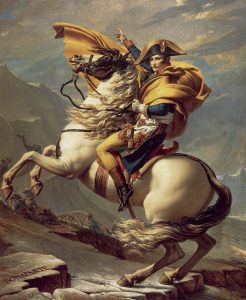
THE NESTOR CUP
The so-called “Nestor cup” is one of the oldest examples of alphabetic writing and is now kept in the Archaeological Museum of Pithecusae, located in the “Villa Arbusto” complex at Lacco Ameno in Ischia (Italy). It is a drinking vase (a kotyle) of the late Geometric Rhodium Period (720 BC) discovered in Ischia in 1955 by Giorgio Buchner, the Italian-German archaeologist who carried out the excavations of San Montano (Lacco Ameno). He personally recomposed the various fragments that gradually emerged during the archaeological digs. That cup was part of the rich funeral treasure belonging to the tomb of a boy of about ten years of age. On the famous artifact a long inscription in retrograde hexameters (from right to left) is engraved, arranged on three lines, which says:
Nèstoros: […]: eùpot[on]: poterion
hòs d’àn tode piesi: poterì[o],: autìka kènon
hìmeros hairèsei: kalliste[fàn]o: Afrodìtes.
[I am the beautiful cup of Nestor, he who shall drink from this cup will immediately desire Aphrodite of the beautiful crown.]
This inscription thus evokes the pleasure of the cup of the mythical King Nestor of Pylos, described in Homer’s Iliad.
WHY IS THE NESTOR CUP SO IMPORTANT ?
The Nestor Cup is very important because it represents the oldest Greek literary text [in Magna Graecia]. (1)Moreover, this extraordinary find bears witness to the role of cultural “connector” between the Greek world and the various indigenous peoples with whom, Pithekoussai established solid cultural, sd well commercial relations. Pithekoussai transmitted the Greek alphabet to other Italic peoples including the Opici, the Etruscans and the Romans (See note). When the Romans gradually conquered large areas of the ancient world, they spread the Greek alphabet, which had in the meanwhile been Romanized. Thus, writing started to spread from Pithekoussai, especially through the Romans, throughout the ancient world, and the most emblematic literary text is the Nestor Cup. In addition, the Nestor Cup inscription represents the first fragment of written text contemporary to that of the Iliad, the famous epic poem attributed to Homer. Note: In this regard, it is important the discovery of the Greek inscription (coming from Pithekoussai on a 770 BC cup) from the necropolis dell’Osteria dell’Osa, in the territory of Gabii, where Roman myth tradition claims Romulus and Remus learned the Greek writing.
Bibliography:
Stefano De Caro Le culture della Campania antica preromana: I Greci (Pithekoussai, Cuma, Neapolis), da “Il Museo Archeologico Nazionale di Napoli” – Electa Napoli 1994, p. 21








